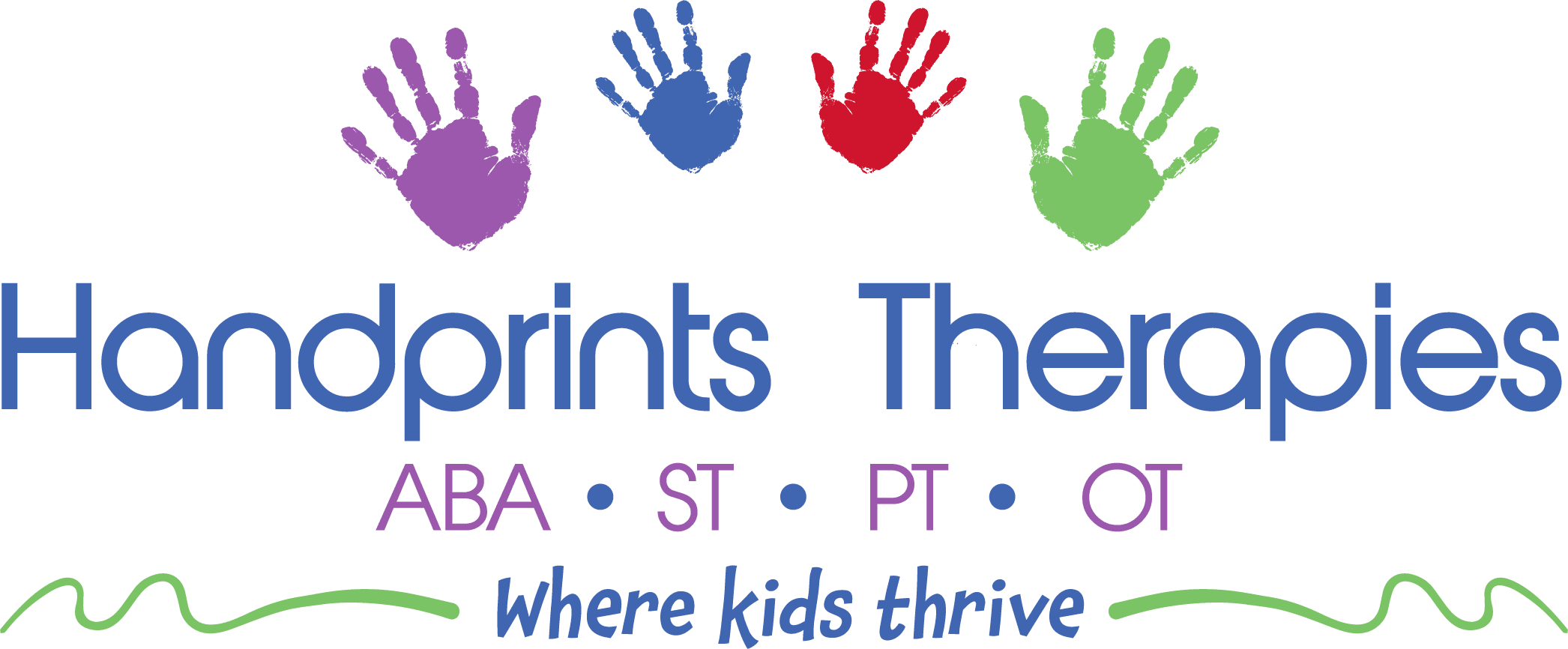Speech therapy covers a variety of factors that influence and control how your child is able to speak and communicate. This can range from helping children through difficulties in forming particular sounds to oral issues with the processes of eating. At Handprints Therapies, we offer speech therapy for whatever scope your child requires help with.
Various Scopes of Pediatric Speech Therapy
Speech Production
Speech production, in broad terms, is how we make speech sounds using the mouth, lips, and tongue. This includes the following focus areas:
- Articulation: Errors (e.g. distortions and substitutions) in production of individual speech sounds.
- Phonology: Predictable, rule-based errors (e.g. fronting, stopping, and final consonant deletion) that affect more than one sound.
- Voice: How we use our vocal folds and breath to make sounds.
- Fluency: The rhythm of our speech.
- Resonance: The result of the transfer of sound produced by the vocal folds through the vocal tract comprised of the pharynx, oral cavity, and nasal cavity (Kummer, 2020a; Peterson-Falzone, Trost-Cardamone, Karnell, & Hardin-Jones, 2017).
Language Use
Language use refers to the words we use and how we use them to share ideas and get what we want. Speech therapy focuses on both spoken language and written language.
Spoken language focus areas include:
- Phonology: The speech sound (i.e. phoneme) system of a language, including the rules for combining and using phonemes.
- Morphology: The rules that govern how morphemes (the minimal meaningful units of language) are used in a language.
- Syntax: The ways in which words can be combined to form sentences in a language.
- Semantics: The meaning of words and combinations of words in a language.
- Pragmatics: The use of language in conversation and broader social situations.
Written language, on the other hand, involves a significant impairment in fluent word reading, reading comprehension, written spelling, and/or written expression (Ehri, 2000; Gough & Tunmer, 1986; Kamhi & Catts, 2012; Tunmer & Chapman, 2007, 2012).
Speech Cognition
Speech cognition refers to the ways that our brains utilize speech in memory, attention, problem-solving, and executive functions. A disruption in communication skills can also have an effect on one’s ability to perform these cognitive functions.
Feeding & Swallowing
Speech therapy also addresses the processes of feeding and swallowing, which provide children and caregivers with opportunities for communication and social experiences that form the basis for future interactions (Lefton-Greif, 2008).
- Feeding: This process involves any aspect of eating or drinking, including gathering and preparing food and liquid for intake, sucking or chewing, and swallowing (Arvedson & Brodsky, 2002).
- Swallowing: A complex process during which saliva, liquids, and foods are transported from the mouth into the stomach while keeping the airway protected. Swallowing is commonly divided into four phases (Arvedson & Brodsky, 2002; Logemann, 1998).
What Does a Typical Speech Evaluation Look Like?
Speech therapy evaluations at Handprints Therapies are scheduled for 1 hour.
Clinicians use formal and informal measures to determine a plan of care specific to each child, and caregiver input is essential to this process. You know your child better than anyone, and this is a time for you to share your child’s strengths, interests, primary concerns, and any developmental, medical, family, or academic history that you feel may be important.
Clinicians also take this time to develop rapport with your child. They utilize playfulness and follow your child’s lead in order for them to feel comfortable and develop the confidence to try new and challenging tasks.
How Often is Speech Therapy Needed?
How often your child needs to attend speech therapy sessions is determined by their needs. Frequency can be anywhere from 1-5x per week. After the assessment is complete, the therapy team will determine how many sessions per week would best benefit your child.
What Does a Typical Speech Therapy Session Look Like?
Speech therapy sessions at Handprints are 30 minutes long. Each activity during the session is chosen to address your child’s unique therapy needs and goals.
At Handprints, therapy can look a lot like play! Studies have shown that children make more connections when learning through play, and we like to utilize that strength. Therapy activities can include games, toys, books, social skills practice, “following directions” tasks, and movement tasks, as well as seated attention tasks.
Will My Child See the Same Therapist Every Time?
At Handprints Therapies, we have an incredible team of clinicians. Many of our clients benefit from multiple services, and we are pleased to offer a variety of therapeutic options that will meet your child’s needs including “SPOT” (Speech Therapy, Physical Therapy, Occupational Therapy) and “ABA” (Applied Behavior Analysis).
Our ABA and SPOT therapists work as a team, and each discipline is available to provide consultation, overlap, and/or co-treatment in order to meet therapeutic goals.
In order to promote generalization, consistency with scheduling, and exposure to various approaches and expertise, your child may have the opportunity to work with a variety of therapists within each discipline.
Do I Need to Stay For My Child’s Therapy Session?
Whether or not you stay for the duration of each speech therapy session for your child is entirely up to you. The sessions are 30 minutes long, and we usually spend the last 5 minutes going over the session with you. If you do need to leave the premises, please check with your clinician.
Your involvement in your child’s speech therapy session is an opportunity for you to learn important techniques and strategies from your therapist.
Your input is also very valuable. Please provide updates to your therapist about your child’s successes, areas of difficulty, and continue to ask questions so that we can help your child thrive!
